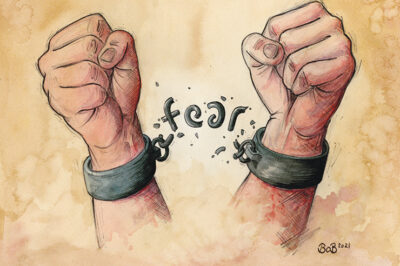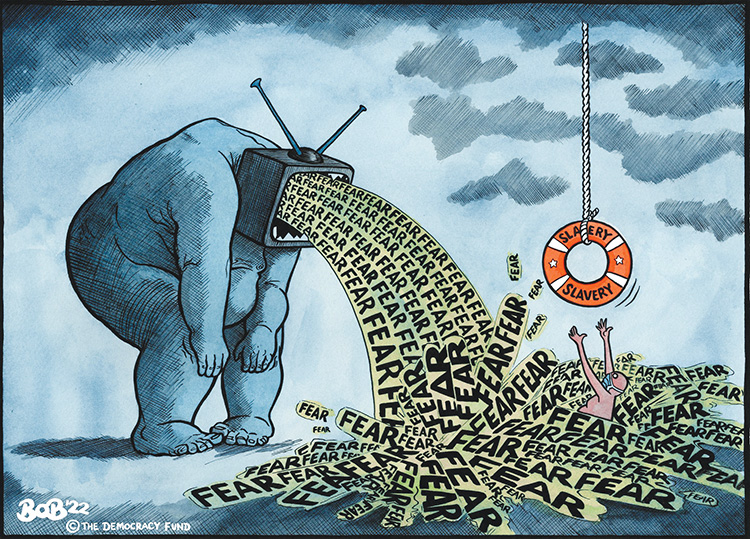From New Dawn 193 (Jul-Aug 2022)
Even the mainstream media and global health organisations cannot ignore the massive toll COVID-19, the Ukraine/Russia conflict, vaccine and mask mandates, geopolitical chaos, rising inflation, and new threats – real and imagined – have taken on our physical and mental health.
The catastrophic rise in mental health disorders over the last three years – from anxiety to depression and suicide – has made us more than physically sick. We now watch in horror the rising mental health fall-out of non-stop, fear-based living.
We learned that researchers in a large study published in the British Medical Journal found that surviving COVID could “increase the risk of developing mental health issues, including increased rates of anxiety and depression, even when compared to non-COVID patients or even those who contracted the flu.” They also reported that it could result from body and brain inflammation and physical and emotional factors related to the pandemic.
The World Health Organisation took it one step further in their March 2022 report, “COVID-19 Pandemic triggers 25% increase in prevalence of anxiety and depression worldwide.” They noted “multiple stress factors” including loneliness, financial woes, fear of the virus, suffering and death, and anxiety and grief after losing a loved one. No mention of how their own policies like mass lockdowns contributed to all of the above.
In May 2022, Medical Press ran a report, “COVID-19’s devastating toll: A rise in adolescent mental health crises and suicidality.” They cited a new study by Patricia Ibeziako and her team in the Department of Psychiatry and Behavioral Services at Boston Children’s Hospital, which found suicidal ideation, or suicide attempts, among young people jumped 60% during the first pandemic year.
Young people were hit hard, and continue to be, because not only do they suffer more from lockdowns, lack of socialisation, masking, and virus fearmongering, but they are forced to watch their parents, the people they rely on for safety and stability, suffer the same.
But we don’t need news headlines to tell us what is going on. Our social circles and social media are filled with people reporting higher levels of illness, anxiety, depression, suicidal thoughts, hostility, anger, and rage.
The sad irony is that the same mainstream media outlets and government health experts admitting to this mental health crisis orchestrated the crisis in the first place.
The war on the mind relies on specific tools and methods to destabilise our sense of safety, belonging, resiliency, and adaptability. Cognitive dissonance is described as a mental discord when we are presented with an idea that seems to contradict previously accepted ideas or thoughts. People are averse to inconsistencies in reality that challenge deeply-held beliefs in their subconscious minds. When new information is presented to them, they either shut down, avoid, or change their thoughts and behaviours to eliminate the inconsistency and restore cognitive consonance.
Behaviour modification works best on the subconscious mind, which does not analyse, criticise, judge, or question but accepts what it is fed as the reality. Coercive persuasion systematically manipulates a person’s behaviours, thoughts, and emotions using fear, intimidation, and punishment, and controlling the information given to the victim (or not giving them any information at all). The coercion comes with a promise of reward if the victim behaves. These tactics include:
- Intimidation – Threaten the victim with various punishments if they don’t behave as the controlling party desires.
- Isolation – Keep victims isolated from human comfort so they feel powerless and alone.
- Cut off information – Keep the victim off balance and in fear of not knowing what is happening in the outside world.
- Increase suggestibility – Use of subliminals, hypnosis, music, sleep deprivation, and food restriction to make someone more compliant.
- Create a sense of powerlessness – Subject the victim to frequent, often surprise actions that undermine their confidence and sense of security.
- Destabilise a sense of self – Work to destroy someone’s ego and sense of self with the intent to recreate them as the controller wishes.
Sometimes victims become strangely attached to their abusers and controllers. Capture bonding and Stockholm Syndrome describe the effects of a mind-control technique that creates confusion, cognitive dissonance, and a destabilised sense of identity to bond the victim with their abusers. Capture bonding may also be a survival mechanism where we are forced to adapt to an extreme by coping with it or becoming accepting of it.
Psychologist George K. Simon, author of In Sheep’s Clothing: Understanding and Dealing With Manipulative People, wrote that to manipulate another human being successfully, a controller or abuser would have to:
- Conceal their aggressive agenda and intentions.
- Know the psychological vulnerabilities of the intended victim, and modify the tactics accordingly.
- Be ruthless enough not to care if the victim is harmed or killed.
- Use covert aggression in the form of relational or passive-aggressive tactics.
The most subtle and insidious tactic is reinforcement, which we have all used on our pets, children, and even ourselves when trying to train a new habit or change a bad one.
Positive reinforcement uses praise, flattery, admiration, attention, affection, gifts, and declarations of love to create a sense of goodness and adoration in the victim. Narcissists and psychopaths use this technique to secure a victim by what is called “love-bombing,” and set the victim up on a pedestal for what will unfortunately be a brutal and abusive fall from grace once the desired outcome is achieved. However, when used for the benefit of the individual, such as in giving positive praise to a child or a training athlete, this kind of reinforcement can build confidence and self-esteem.
Negative reinforcement is the polar opposite, using punishment, criticism, and silent treatment to manipulate the victim to behave a certain way. Negative reinforcement can include shaming, guilting, yelling, abusive language, and even physical violence. Today, silent treatment equates to social media censoring, blocking, banning, and deplatforming.
Using the threat of fear, violence, and virulent language serves to degrade, diminish, and dominate and, in the extreme, leads to torture and physical abuse.
Intermittent reinforcement is far more devious and effective than either positive or negative reinforcement at creating such strong instability and cognitive dissonance in the victim they cannot help but surrender control to their abuser. Intermittent reinforcement relies on doubt, fear, anxiety, expectation, and hope, and plays upon the deepest emotional needs of wanting to be loved and accepted. It can, when used adeptly, create trauma that can literally drive the victim insane or to commit suicide.
The controller/abuser starts with positive reinforcement, setting the victim up to crave more positive reinforcement, which is then taken away intermittently to create confusion and anxiety. The victim wants more of what he/she got in the beginning and begins to accept the introduction of negative reinforcement, as long as it is peppered in with some positive. By this point, the controller/abuser can begin to torture the victim and the victim will become so desperate for the normalcy they once received, that they will accept more abuse while waiting to get it. Soon, the victim is settling for tiny crumbs of positive behaviour from the controller/abuser, who now has the victim under complete control.
This kind of manipulation puts the victim under a “spell” because the damage is done on a subconscious level. Not only does this manipulation change the victim’s thoughts and perceptions, but it changes their actual reality and removes their individual will over time.
Victims suffer in a perpetual state of confusion and chaos, even Post Traumatic Stress Disorder, with symptoms such as severe depression, panic attacks, insomnia, physical illness, emotional debilitation, inability to concentrate and focus, and a host of other ailments. As the control continues, it can drive the person to suicide or into psychiatric care if proper help and support are not found.
All these mind manipulation tactics are used against whole populations today and have been in the recent past (COVID-19, etc.), and it will continue in coming times. Once a victim is under this hypnosis, it is hard to come out of, but it is possible. Turn off the news. Avoid negative and divisive people. Get outside and move around in nature. Work on your health and general well-being. Eat healthier foods. Meet with friends and loved ones. Engage with pets.
We are at a point in history when negative forces are constantly working against us. Protecting your own individual health is now a revolutionary act and one that will have a ripple effect on those struggling around you to do the same.
© New Dawn Magazine and the respective author.
For our reproduction notice, click here.




